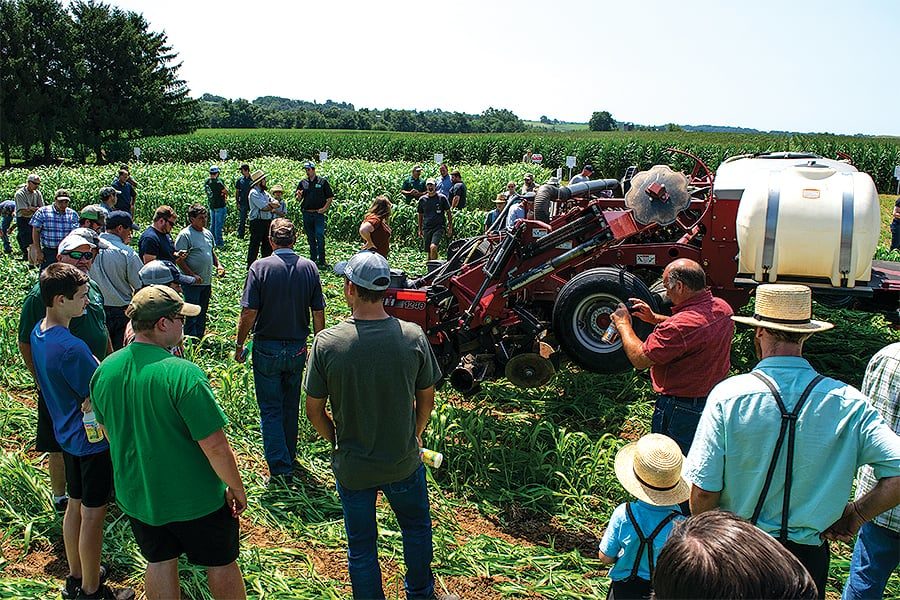No-Till Farmer
Get full access NOW to the most comprehensive, powerful and easy-to-use online resource for no-tillage practices. Just one good idea will pay for your subscription hundreds of times over.

CHECKING IT OUT. Attendees at the 2019 Pennsylvania No-Till Alliance Field Day check out Jim Hershey’s 12-row Case IH 1240 Early Riser planter, which has Dawn’s ZRX rollers that allow him to terminate cover crops and no-till corn in one pass. He also applies fertilizer in furrow and on top of the row with the machine.
Soil conditions in Pennsylvania can vary as much as the terrain, from sandy or clay loam to rocks and knobs of shale — presenting a potential nightmare for no-tillers trying to achieve consistent stands and protect yield potential.
One attraction at this year’s Pennsylvania No-Till Alliance Field Day was apparent when attendees walked onto Jim Hershey’s farm — six planters lined up at the gate.
No-tillers Kevin Balmer, Joel Brandt, David Breneman, Jim Hershey, Frank Stoltzfus and Linn Fahnestock shared how they set their planters up this year to deal with real-world no-till conditions on their farms — whether it’s planting into rocky soils, tough crop residue, terminated cover crops or even towering living covers.
The Lancaster County no-tillers work in the largest livestock-producing county in Pennsylvania that also happens to have the most impaired streams, making it a major contributor of pollution to the Chesapeake Bay. Farmers are under the gun for reducing nitrogen (N) inputs to limit nutrient runoff.
Even that has challenges, as the county got 75 inches of rain in 2018, when a normal year sees just 42 inches. Many of the no-tillers sharing their planter setups are seeding cover crops on their farm and even no-tilling into living covers to keep more soil in their fields and build soil health.
Elizabethtown, Pa., no-tiller Jim Hershey uses a highly accessorized 12-row Case IH 1240 Early Riser planter outfitted with Dawn Equipment’s ZRX rollers to roll down tall cover crops and plant corn in one pass.

“This…